Some of the greatest foreign policy problems and international challenges today concern arms control. This is partly because of how nuclear weapons have shaped the current security environment: Russia’s war on Ukraine has brought the risk of nuclear war to the forefront of international conversation. The conflict evokes multiple arms control ideas and concerns, including the norm of not using nuclear weapons against non-nuclear states, the norm of refraining from nuclear saber rattling, and the need for an agreement that creates a safety zone around nuclear power plants. Additionally, the current state of arms control is now characterized by its diminished condition: treaty violations, withdrawals and suspensions, abruptly terminated dialogues, and diplomacy voids. New challenges posed by the new security landscape are co-mingling to render the repair and renewal of the arms control enterprise — and indeed, the negotiation of future agreements — anywhere from overwhelming to impossible.
What’s more, fatigue is setting in, which makes for perhaps lackluster efforts to dissect the problem. For a while, there were earnest attempts among scholars and analysts to wrestle with arms control as a solvable problem. Numerous events and articles spoke to the question of the “future of arms control,” or acknowledged that arms control was “at a crossroads,” aiming to discern what could possibly come next. Some have even wondered whether the enterprise of arms control is finished, or have taken the present state of arms control — which appears eroded and ineffective — as evidence that arms control doesn’t work, and was never a good idea.
Others have suggested that the United States can lead the charge in starting anew, creating an entirely novel global governance regime. However, this is not particularly feasible at a time when resources are otherwise prioritized to the ongoing war in Ukraine. Additionally, the tension between engaging in more broadly-aimed arms control negotiations while simultaneously devoting resources to costly modernization and competition-driven weapons innovation programs at home has always been fertile ground for controversy and conflict. In a related vein, others have argued that arms control is a tool better suited to a different security environment. Since the Cold War and its aftereffects (like bipolarity and the nuclear arms racing that grew out of the dawn of the nuclear age) that facilitated arms control’s successes are no longer present, they say, arms control has no future.
These detractors could not be more misguided: arms control still matters. However, finding a way forward requires grappling with four formidable, though not impossible, challenges.
THE CURRENT ARMS CONTROL CRISIS IS THE RESULT OF FOUR CHALLENGES
First, arms control just appears broken. Whether eroded, outdated, or violated, the frailty of the international arms control enterprise is self-evident. We see it in the impending expiration of the New Strategic Arms Reduction Treaty (New START). It’s visible in Russia’s suspension of onsite New START inspections — inspections designed to verify compliance with the treaty’s provisions — which the United States just deemed a violation. It’s in the abruptly terminated U.S.-Russian Strategic Stability Dialogue, which stood to advance the enterprise of arms control by making the U.S.-Russian bilateral component at least fit for purpose in a new era. Even China’s buildup of nuclear weapons and Beijing’s refusal to participate in nuclear arms control stand testament to arms control’s current weakness. And it is evident in the progressive and purposeful destruction of the European conventional arms control architecture that foreshadowed Russia’s attack on Ukraine, Russia’s violation of the Intermediate-Range Nuclear Forces Treaty and its subsequent demise, as well as Washington’s withdrawal from the Anti-Ballistic Missile Treaty and Open Skies Treaty. All these examples could easily be interpreted as evidence that arms control is no longer worth the effort.
Second, arms control remains controversial. Questions about its value, and how to best use it as a security tool, have always evoked strong opinions. The deep divisions we see concerning arms control today aren’t new. They have grown out of differing views on the role of nuclear weapons in national security, the credibility of deterrence, the ability to place trust in the adversary and in its compliance with a potential agreement, as well as concern about arms control limiting U.S. military options and military flexibility. These views are as old as the nuclear age itself. Fundamentally, strong opinions against arms control as a policy priority are steeped in the deep-seated conviction that it is wrong to bargain away strategic advantage. For decades there has been tension between the desire to effectively use nuclear weapons in a U.S. security strategy, and to simultaneously achieve meaningful arms control outcomes. The divide between viewpoints on arms control and their subsequent politicization, which has only deepened over time, makes the very discussion of how to proceed with arms control — current geopolitical uncertainties aside — controversial.
Third, what we need from arms control going forward is very different from what it was designed for or used to accomplish in the past. During the Cold War, for example, the Strategic Arms Limitation Talks codified a balance that was designed to depend on what national security expert Jennifer Sims called a “weapons-stability nexus” — the belief that nuclear weapons’ very existence was necessary to prevent their use. Today, with so many actors and capabilities, what this nexus must look like is elusive. If stability is the goal, then shoring up or redefining this construct for a new geopolitical era poses a formidable challenge. However, truly useful arms control is likely to require much more than the codification of strategic stability through limitations to long-range nuclear weapons and delivery devices, given the rapid innovation of, for example, high-precision conventional weapons and the potential for space-based missile defense. The strategic stability equation is more complex than ever before. Additionally, dual-use technologies are increasingly emerging from the private sector and diffusing, making for a greater number of capable actors worldwide. This forces a reconsideration of export controls (arms control treaties’ sibling mechanism) and their overall significance: We need export controls to carry more weight than they were previously designed for.
Fourth and finally, the United States is currently in an exceptionally difficult negotiating environment. In easier times, it was more realistic to consider broadening the number of participating states in an existing treaty. In principle, this is a lower bar than crafting an arms control treaty from scratch. However, even efforts to bring China into the existing New START Treaty have faltered. To date, China has lacked the infrastructure, institutional capacity, and openness to the very concept of verification — not to mention the strategic imperative — to engage in arms control with the United States and Russia. Moreover, despite Russia’s stated interest in arms control, there is broad disagreement between Washington and Moscow about what systems should be included in a future treaty and how to calculate strategic stability, making agenda setting difficult.
Fundamentally, arms control is a collection of ideas about how to manage weapons and technology in the service of national security. It is a security tool that must complement and influence security doctrine and national security policy. The task at hand must be to understand this evolving set of ideas, align it with the policy objectives it can affect, and use it to further national security objectives.
Despite, or perhaps in light of, these four problems, the administration’s Nuclear Posture Review (NPR), National Defense Strategy, and National Security Strategy explicitly mention arms control and acknowledge its importance. Per the NPR: “Mutual, verifiable nuclear arms control offers the most effective, durable and responsible path to reduce the role of nuclear weapons in our strategy and prevent their use.”
While both documents champion the importance of arms control to U.S. policy and international security, they are also short on details for its current and future use. This ambiguity, as well as the administration’s lack of new public plans and ideas for arms control, may well be due to any or all of the four aforementioned problems. But a lack of vision contributes to the further erosion of arms control by keeping the enterprise — and its continued importance — inconspicuous.
The State of the Union address next week would be an ideal time for President Joe Biden to put some meat on the bones of his vision for an international arms control architecture. The Biden administration should come out strong on arms control now, bolstering the legitimacy of the enterprise and the ideas that support it, while offering new concepts, technologies, and fora to see these aims through. The alternative, an arms control void derived from a wait-and-see posture, is risky and destabilizing. It further exacerbates arms control’s erosion. Now is the time for new ideas for arms control, and the more the administration can say about what comes next, the better.
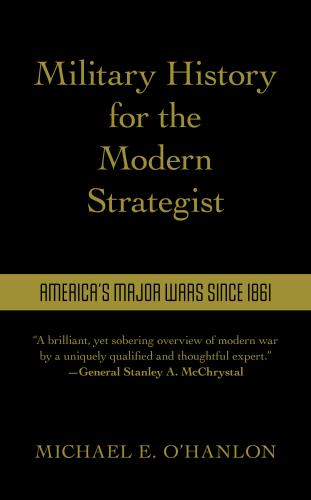
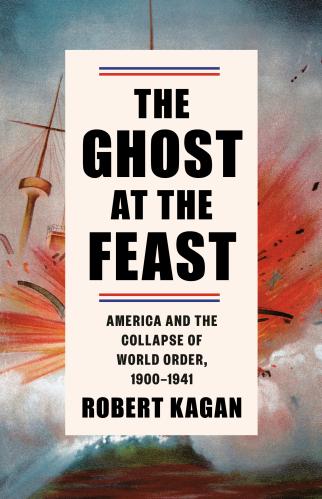
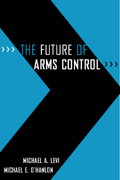

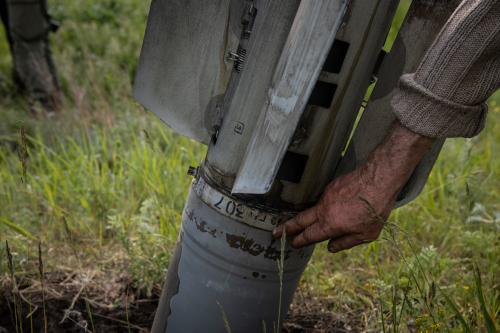
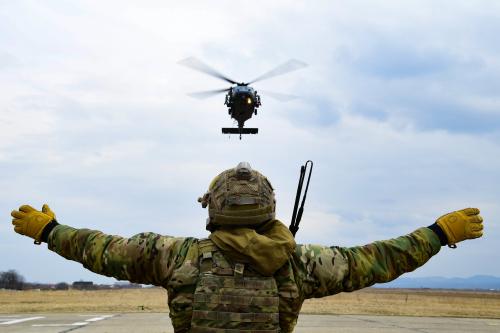

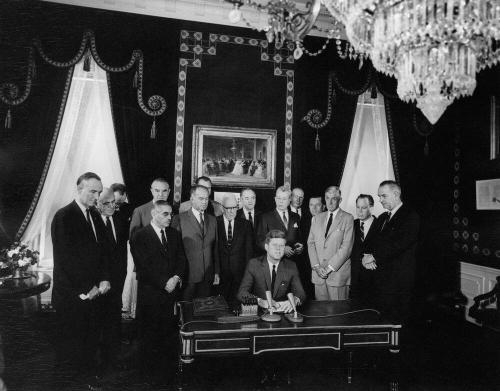
Commentary
Arms control needs a shot in the arm
February 3, 2023